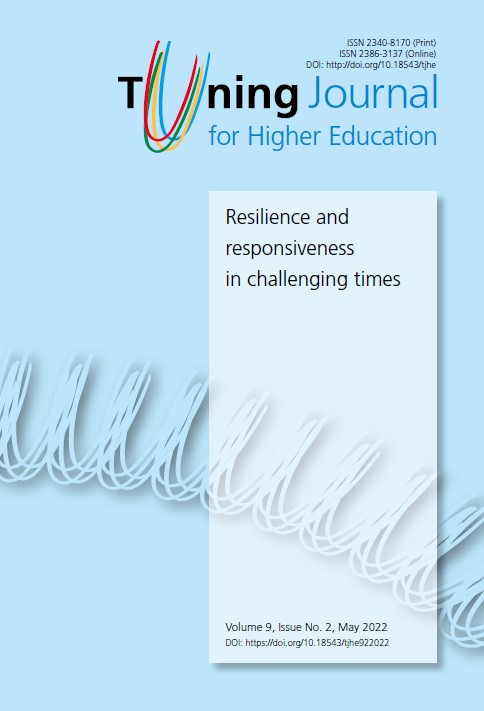Revealing invisibility: Interpreting social and behavioral aspects of the Coronavirus pandemic through student documentary photography
Abstract
Life for the population in the Czech Republic came to a standstill in spring 2020 due to measures enacted in relation to the Coronavirus epidemic: a travel ban and closed borders, the cancellation of physical lessons at all types of school, the closure of stores except those securing basic necessities, radical restrictions to free movement of people. This unprecedented situation became the inspiration for creative work by students at the Studio of Advertising Photography at Tomas Bata University in Zlin. Since joint work in the studio was not possible, the students were given their assignments as part of the Digital Photography classes in the form of a document reflecting the social situation during the Corona crisis. Selected visual narratives, or photo novellas, are a methodical component of arts-based research, meaning the use of art artefacts and imagination for a more complete knowledge of this mode of social reality. Verbal commentary complements the images’ topic by interpreting the main themes of the selected photographic images: Easter festivities without religious services, sewing facemasks and covering faces, newly discovered meanings of borders and emptiness, the social role of meals in family life. The Coronavirus crisis has revealed the hidden opportunities of a new way to see and discover again how to evaluate our everyday life, something which in the haste of each ordinary day can become subconscious routine.
Received: 30 August 2021
Accepted: 20 April 2022
Downloads
References
Bateson, Gregory, and Margaret Mead. Balinese Character: A Photographic Analysis. New York: The New York Academy of Sciences, 1942.
Bullivant, Stephen. Europe’s Young Adults and Religion: Findings from the European Social Survey (2014-16) to Inform the 2018 Synod of Bishops. Twickenham, UK: Benedict XVI Centre for Religion and Society, St Mary’s University, 2018.
Cohen-Evron, Nurit. “Students Living within Violent Conflict: Should Art Educators “Play It Safe” or Face “Difficult Knowledge”?”. Studies in Art Education 46, no. 4 (2005): 309-22.
Cole, Ardra L. “Arts-Informed Research: A Transformative Methodology.” Baltic Journal of Psychology 11, no. 1/2 (2015): 21-27.
Collier Jr., John. “Photography in Anthropology: A Report on Two Experiments.” American Anthropologist 59, no. 5 (1957): 843-59.
Collier Jr., John. “Visual Anthropology’s Contribution to the Field of Anthropology.” Visual Anthropology 1, no. 1 (1987): 37-46.
Dempsey, John V., and Susan A. Tucker. “Using Photo-Interviewing as a Tool for Research and Evaluation.” Educational Technology 34, no. 4 (1994): 55-62.
Eliade, Mircea. Images and Symbols: Studies in Religious Symbolism. Translated by Philip Mairet. Princeton: Princeton University Press, 1961.
Gadamer, Hans-Georg. The Relevance of the Beautiful and Other Essays. Translated by Nicholas Walker. Cambridge: Cambridge University Press, 1987.
Goodman, Nelson. Jazyky Umění: Nástin Teorie Symbolů [Languages of Art: An Approach to a Theory of Symbols]. Translated by Tomáš et al. Kulka. Praha: Academia, 2007.
Goodson, Ivor F., and John F. Schostak. “Curriculum and Coronavirus: New Approaches to Curriculum in the Age of Uncertainty.” PROSPECTS: Comparative Journal of Curriculum, Learning, and Assessment (2021): 1-17.
Greenhow, Christine, Cathy Lewin, and K. Bret Staudt Willet. “The Educational Response to Covid-19 across Two Countries: A Critical Examination of Initial Digital Pedagogy Adoption.” Technology, Pedagogy & Education 30, no. 1 (2021): 7-25.
Han, Byung-Chul. The Burnout Society. Stanford Stanford University Press, 2015.
Harper, Douglas. “On the Authority of the Image: Visual Methods at the Crossroads.” In Handbook of Qualitative Research., edited by Norman K. Denzin and Yvonna S. Lincoln, 403-12. Thousand Oaks, CA: Sage Publications, Inc, 1994.
Harper, Douglas. “Reimagining Visual Methods: Galileo to Neuromancer.” In Handbook of Qualitative Research, edited by Norman K. Denzin and Yvonna S. Lincoln, 717- 32. Thousand Oaks: Sage Publiations, 2000.
Harper, Douglas. “Talking About Pictures: A Case for Photo Elicitation.” Visual Studies 17, no. 1 (2002): 13-26.
Heidegger, Martin. Being and Time. New York: Harper & Row Publishers, 2008.
Kopp, Adam R., Sharon Rikin, Todd Cassese, Matthew A. Berger, Amanda C. Raff, and Inessa Gendlina. “Medical Student Remote Econsult Participation During the Covid-19 Pandemic.” BMC Medical Education 21, no. 1 (2021): 1-10.
Husserl, Edmund. The Crisis of European Sciences and Transcendental Phenomenology: An Introduction to Phenomenological Philosophy. Evanston, IL: Northwestern University Press, 1970.
Readman, Mark, and Jenny Moon. “Graduated Scenarios: Modelling Critical Reflective Thinking in Creative Disciplines.” Art, Design & Communication in Higher Education 19, no. 2 (2020): 167-83.
Jackson, Eve. Jídlo a Proměna: Symbolika Jídla Ve Snech, Pohádkách a Mýtech. Translated by Věra Stavová. Brno: Nakladatelství Tomáše Janečka, 2004.
Jirásek, Ivo. “Christian Instrumentality of Sport as a Possible Source of Goodness for Atheists.” Sport, Ethics and Philosophy 12, no. 1 (2018): 30-49.
Jirásek, Ivo. “Smysl Vizualizace Lidského Těla: Různorodé Významy Nahoty.” Filosofický časopis 58, no. 6 (2010): 863-83.
Jirásek, Ivo, and Emanuel Hurych. “The Perception of Spiritual Health Differences between Citizens and Physicians in the Czech Republic.” Health Promotion International 33, no. 5 (2018): 858-66.
Jirásek, Ivo, Geoffery Zain Kohe, and Emanuel Hurych. “Reimagining Athletic Nudity: The Sexualization of Sport as a Sign of a ‘Porno-Ization’ of Culture.” Sport in Society 16, no. 6 (2013): 721-34.
Jirásek, Ivo, Pavel Veselský, and Jiří Poslt. “Winter Outdoor Trekking: Spiritual Aspects of Environmental Education.” Environmental Education Research 23, no. 1 (2017): 1-22. Jung, Carl Gustav. Man and His Symbols. London: Aldus Books, 1964.
Kagge, Erling. Radost Z Ticha: Proč Zavřít Dveře Před Hlukem Světa. Translated by Viola Somogyi. Brno: Jan Melvil Publishing, 2018.
Kopp, Adam R., Sharon Rikin, Todd Cassese, Matthew A. Berger, Amanda C. Raff, and Inessa Gendlina. “Medical Student Remote Econsult Participation During the Covid-19 Pandemic.” BMC Medical Education 21, no. 1 (2021): 1-10.
Lévinas, Emanuel. Být Pro Druhého (Dva Rozhovory). Translated by Jan Sokol. Praha: Zvon, 1997.
McIntyre, Alice. “Through the Eyes of Women: Photovoice and Participatory Research as Tools for Reimagining Place.” Gender, Place and Culture 10, no. 1 (2003): 47-66.
Newman, Noah A., and Omar M. Lattouf. “Coalition for Medical Education-a Call to Action: A Proposition to Adapt Clinical Medical Education to Meet the Needs of Students and Other Healthcare Learners During Covid-19.” Journal of Cardiac Surgery 35, no. 6 (2020): 1174-75.
Novotný, František. Gymnasion: Úvahy O Řecké Kultuře. Praha: Gustav Voleský, 1922.
Pain, Helen. “A Literature Review to Evaluate the Choice and Use of Visual Methods.” International Journal of Qualitative Methods 11, no. 4 (2012): 303-19.
Paleček, Antonín. “Sekularizace V Pohledu Inter- a Intragenerační Transmise: Čr Ve Srovnání Post-Komunistických Zemí Střední Evropy.” Czech Society / Naše Společnost 13, no. 2 (2015): 13-26.
Patočka, Jan. Body, Community, Language, World. Translated by Erazim Kohák. Chicago, Ill.: Open Court, 1998. Book.
Readman, Mark, and Jenny Moon. “Graduated Scenarios: Modelling Critical Reflective Thinking in Creative Disciplines.” Art, Design & Communication in Higher Education 19, no. 2 (2020): 167-83.
Rose, Gillian. Visual Methodologies: An Introduction to Researching with Visual Materials. 4th Edition ed. Oxford, UK: University of Oxford, 2016.
Sá, Maria José, and Sandro Serpa. “Cultural Dimension in Internationalization of the Curriculum in Higher Education.” Education Sciences 10 (2020): Art. 375.
Scarles, Caroline. “Where Words Fail, Visuals Ignite. Opportunities for Visual Autoethnography in Tourism Research.” Annals of Tourism Research 37, no. 4 (2010): 905-26.
Shanks, Michael, and Connie Svabo. “Scholartistry: Incorporating Scholarship and Art.” Journal of Problem Based Learning in Higher Education 6, no. 1 (2018): 15-38.
Singhal, Arvind, Lynn M. Harter, Ketan Chitnis, and Devendra Sharma. “Participatory Photography as Theory, Method and Praxis: Analyzing an Entertainment- Education Project in India. Critical Arts 21, no. 1 (2007): 212-27.
Singhal, Arvind, and Elizabeth Rattine-Flaherty. “Pencils and Photos as Tools of Communicative Research and Praxis: Analyzing Minga Perú’s Quest for Social Justice in the Amazon.” International Communication Gazette 68, no. 4 (2006): 313-30.
Smith, C. Zoe, and Anne-Marie Woodward. “Photo-Elicitation Method Gives Voice and Reactions of Subjects.” Journalism & Mass Communication Educator 53, no. 4 (Winter 1999): 31-41.
Thornquist, Clemens. “Material Evidence: Definition by a Series of Artefacts in Arts Research.” Journal of Visual Art Practice 14, no. 2 (2015): 110-19.
van Gennep, Arnold. Přechodové Rituály: Systematické Studium Rituálů. Translated by Helena Beguivinová. Praha: Portál, 2018.
Wall, Kate, Steve Higgins, Elaine Hall, and Pam Woolner. “‘That’s Not Quite the Way We See It’: The Epistemological Challenge of Visual Data.” International Journal of Research & Method in Education 36, no. 1 (2013): 3-22.
Wang, Caroline. “Photovoice: A Participatory Ation Research Strategy Applied to Women’s Health.” Journal of Women’s Health 8, no. 2 (1999): 185-92.
Wang, Caroline, and Mary Ann Burris. “Empowerment through Photo Novella: Portraits of Participation.” Health Education Quarterly 21, no. 2 (1994): 171-86.
Authors are required to sign and submit a copyright transfer agreement after acceptance but before publication of their manuscript. To that effect, they receive, from the Managing Editor of Tuning Journal for Higher Education, a standard copyright assignment form designed along the following lines:
1. Authorship:
The author who signs the copyright transfer agreement must be the sole creator of the work or legally acting on behalf of and with the full agreement of all the contributing authors.
2. Copyright and Code of conduct:
a) Authors warrant that their work is original; has not been previously copyrighted or published in any form; is not under consideration for publication elsewhere; its submission and publication do not violate TJHE Ethical Guidelines for Publication and any codes (of conduct), privacy and confidentiality agreements, laws or any rights of any third party; and no publication payment by the Publisher (University of Deusto) is required.
b) Authors are solely liable for the consequences that may arise from third parties’ complaints about the submitted manuscript and its publication in Tuning Journal for Higher Education (TJHE).
c) Authors grant to the Publisher the worldwide, sub-licensable, and royalty-free right to exploit the work in all forms and media of expression, now known or developed in the future, for educational and scholarly purposes.
d) Authors retain the right to archive, present, display, distribute, develop, and republish their work (publisher's version) to progress their scientific career provided the original publication source (Tuning Journal) is acknowledged properly and in a way that does not suggest the Publisher endorses them or their use of the wortk.
e) Authors warrant that no permissions or licences of any kind will be granted that might infringe the rights granted to the Publisher.
3. Users:
Tuning Journal for Higher Education is an Open Access publication. Its content is free for full and immediate access, reading, search, download, distribution and reuse in any medium or format only for non-commercial purposes and in compliance with any applicable copyright legislation, without prior permission from the Publisher or the author(s). In any case, proper acknowledgement of the original publication source must be made and any changes to the original work must be indicated clearly and in a manner that does not suggest the author’s and or Publisher’s endorsement whatsoever. Any other use of its content in any medium or format, now known or developed in the future, requires prior written permission of the copyright holder.


1.jpg)
1.jpg)
.jpg)
1.jpg)
.jpg)
.jpg)









